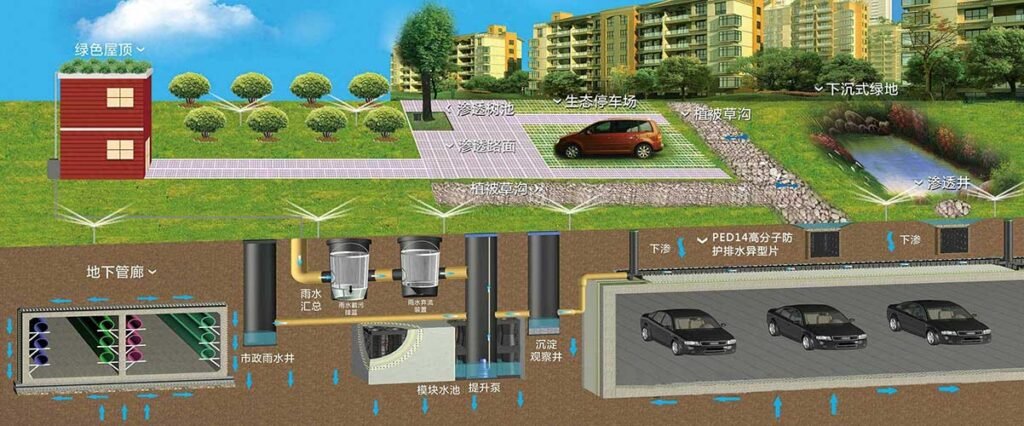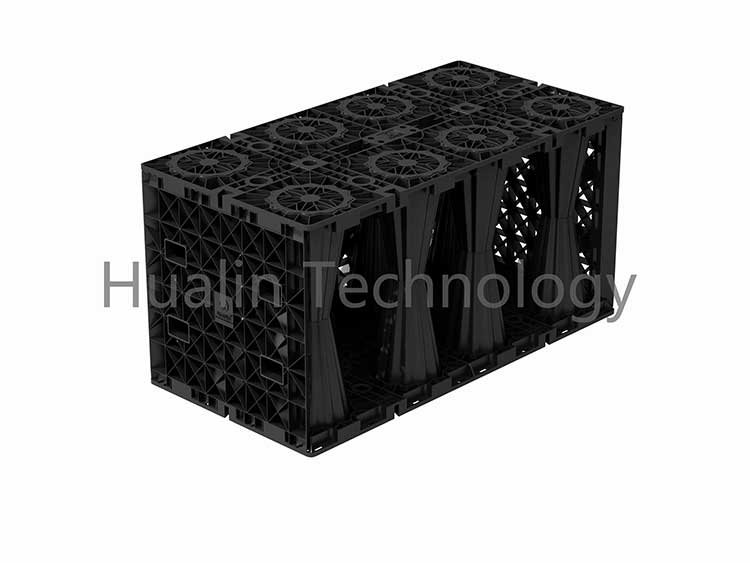A rainwater harvesting system refers to the entire process of collecting rainwater. The collected water is used to irrigate crops, replenish groundwater, and for other non-domestic uses, such as landscaping, landscaping, car washes, road washing, cooling water, and toilet flushing. This can conserve water resources and significantly alleviate the country’s water shortage.

What is rainwater harvesting system
A rainwater harvesting system collects rainwater based on demand and then processes it to meet design standards. Currently, most systems consist of a wastewater filtration system, a water storage system, and a purification system.
Types of rainwater harvesting system
Rainwater harvesting systems can be roughly divided into two categories according to the source of rainwater:
Дождевая вода на крыше
Rooftop rainwater is relatively clean, with few impurities, sediment and other pollutants. It can be discharged directly into the water storage system after discarding and simple filtration, and then treated for use.
Ground rain
Rainwater on the ground contains many impurities and has complex pollutant sources. After being discarded and roughly filtered, it must be precipitated before being discharged into the water storage system.
The role of rainwater harvesting systems
The function of the rainwater harvesting system is to absorb water, store water, infiltrate water, and purify water. When necessary, it can release and utilize the stored water to realize the free migration of urban rainwater. Rainwater harvesting and utilization can bring us many benefits. The collected rainwater can be used in daily life (washing clothes and cars, flushing toilets, watering greenery, flushing roads, and fire fighting). The collection and utilization of rainwater can also reduce the amount of rainwater runoff in urban streets, reduce the pressure on urban drainage, and effectively reduce the confluence of rainwater and sewage, reducing the pressure on sewage treatment.
Replenish groundwater
When it rains, some rainwater naturally seeps into the ground through wastewater wells. Most groundwater is replenished with rainwater, tap water, or recycled water. The latter two methods are more expensive than rainwater, and recycled water replenishment can also pollute groundwater.
Using rainwater to replenish groundwater resources is the most economical method. In many Chinese cities, excessive groundwater extraction has led to a drop in groundwater levels, a growing underground funnel, and even land subsidence and seawater backflow.
After soaking into the ground through oases and permeable surfaces, rainwater can flow directly back into the ground, depending on the situation. This cultivates groundwater and prevents ground subsidence and seawater backflow. When groundwater replenishment is sufficient, it can be extracted for domestic use, while the soil above ground purifies the rainwater.
Prevent urban flooding
Due to urban expansion, impervious areas are increasing annually, significantly increasing peak urban stormwater runoff.
Due to the shortened outflow period, heavy rainfall can lead to urban stormwater accumulation, disrupting traffic, damaging buildings, and significantly impacting urban production and daily life. This creates a tension between urban water scarcity and increased drainage pressure during rainstorm seasons. Soaking and utilizing rainwater can effectively address this tension.
It is recognized that the rapid discharge of urban stormwater increases flooding hazards, river erosion, and pollutant impact loads in receiving water bodies. It also creates operational difficulties for sewage treatment plants in combined systems, with some combined rainwater and sewage overflowing and polluting water bodies. The implementation of rainwater collection and utilization projects can effectively alleviate pressure on drainage systems and road surface flooding. By focusing on rainwater collection and utilization and the treatment of black and odorous water, we can promote integrated regional governance and gradually alleviate the problems of light rain, heavy rain, urban waterlogging, black and odorous water, and urban heat islands.
Sponge city construction
Since ancient times, water has been considered a beautifying agent.
In modern times, due to the rise of industry, population growth, urban expansion, and increasing pollution, water resources are becoming increasingly scarce, and many scenes featuring water have disappeared. Our current goal is to build a harmonious society between humanity and nature. This requires satisfying not only people’s basic needs for food, clothing, housing, and transportation, but also their aesthetic enjoyment. Beautifying the environment and making the world appear more natural is a shared goal for humanity.
Rainwater harvesting tanks can supplement water use in water bodies, oases, and landscapes, generating significant environmental benefits. Rainwater collection, utilization, or underground irrigation can alleviate urban flood control and drainage pressures, prevent disasters such as poor drainage and flooding, reduce peak runoff during the rainy season, increase evaporation, improve the urban ecological environment, curb environmental degradation, reduce or prevent road and garden flooding, and enhance the quality of life for urban residents.

Improve water utilization efficiency
Rainwater can be used for daily purposes such as flushing toilets, washing clothes, and watering flowers, eliminating the need for regular drinking water.
Because of its low calcium content, rainwater is soft and can be used as cooling water. It is also suitable for industrial use, such as cleaning machinery and workshops, reducing tap water consumption. It can also be used for municipal water supplies such as road cleaning and urban landscaping irrigation. Some communities have even issued regulations prohibiting the use of municipal tap water and underground well water for landscape watering.
Using rainwater harvesting systems to collect and store rainwater not only saves water but also significantly improves economic and social benefits.
Advantages of rainwater harvesting system
Rainwater harvesting systems are based on simple technology. Their total installation and operation costs are much lower than water purification or pumping systems, and ongoing maintenance requires virtually no time and effort.
On an industrial scale, rainwater harvesting can provide large quantities of needed water, helping businesses operate smoothly without depleting public water resources.
Suitable for irrigation: Rainwater harvesting systems require minimal new infrastructure.
Reducing flooding and soil erosion. During the rainy season, rainwater is collected in large storage tanks, which can help reduce flooding in some low-lying areas. Furthermore, it helps reduce soil erosion and surface water pollution, reducing pesticide and fertilizer contamination of rainwater runoff, thereby creating cleaner lakes and ponds.